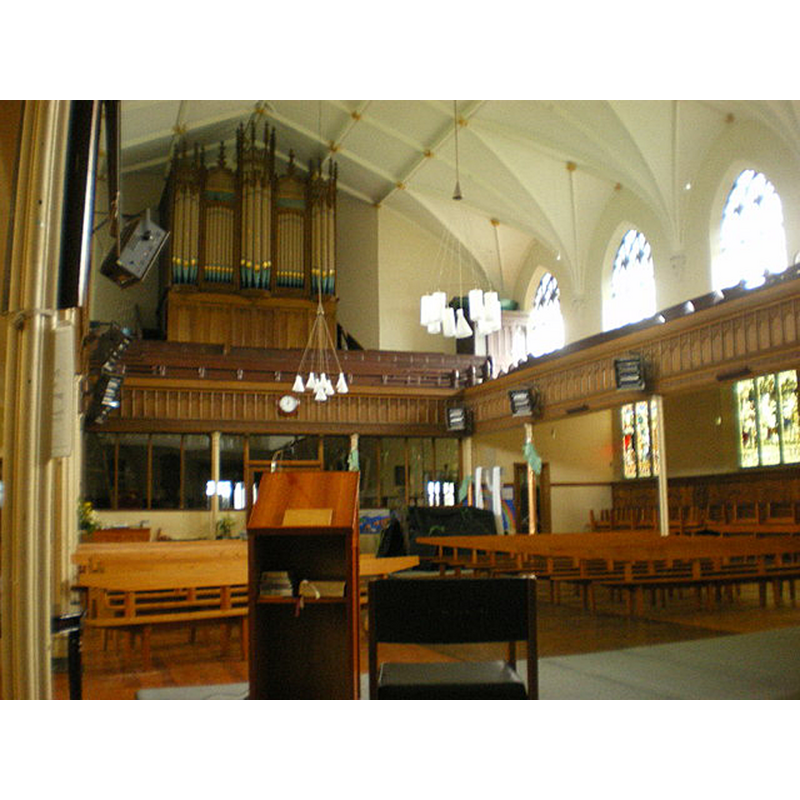Manchester No. 2 / Aldport? / Aston-under-Lyne? / Mametestre

Image copyright © Alexander P Kapp, 2009
CC-BY-SA-2.0
Results: 4 records
view of church exterior - southeast view
view of church interior - nave - looking east
view of church interior - nave - looking west
INFORMATION
FontID: 19372MAN
Object Type: Baptismal Font1?
Church/Chapel: Parish Church of St. Michael and All Angels
Church Patron Saints: St. Michael & All Angels
Church Location: Manchester Road, Ashton-under-Lyne, Greater Manchester, OL7 0LB
Country Name: England
Location: Greater Manchester, North West
Directions to Site: Ashton is located 10 km E of Manchester city centre, in the Metropolitan Borough of Tameside
Ecclesiastic Region: Diocese of Manchester
Historical Region: Hundred of Salford
Century and Period: 11th - 13th century, Medieval
Font Notes:
Click to view
No individual entry found for Ashton [-under-Lyne] in the Domesday survey [cf. infra]. Booker (1854) writes: "At the time of the Domesday Survey (1080-86) there existed for the whole of this extensive parish but two churches: [...] one dedicated to St. Mary, standing according to tradition at the termination of St. Mary's Gate, at the eastern end of the avenue, near to the site of the present Manchester Exchange; and the other, dedicated to St Michael, situated at Aldport (near Knott Mill)", and cites a text from the Domesday survey naming both churches in a foot note. There is no entry in the Domesday survey for this Ashton, but some argue that this was the second medieval church usually noted for Manchester, besides St. Mary's. The entry for Ashton-under-Lyne in the Victoria County History (Lancaster, vol. 4, 1911) notes: "The church of St. Michael is in Domesday Book recorded to have shared with the parish church of Manchester an ancient endowment of one ploughland [...] The church of ST. M[ichael] is at the present day of greater historical than architectural interest. The site is ancient; the church stands at the east end of the town in what was formerly a picturesque situation on rising ground on the north side of the River Tame, and consists of chancel with north vestry, nave with north and south aisles, south porch, and west tower. The present church is entirely modern, but is the direct descendant of a building which appears to have been erected at the beginning of the 15 th century (c. 1413), and which was repaired and enlarged about a hundred years later, in the lifetime of Sir Thomas Ashton (died 1514), when a new tower was built. In January 1791 this tower was struck by lightning and great damage was done, necessitating a general repair of the structure in the following year. In 1817 the tower was taken down and a new one erected (1818), and soon after the whole of the north side of the church was rebuilt as at present. Whilst the work was in progress (March 1821) a fire occurred, doing much damage to the original building, which was only partially repaired, the south side continuing in a more or less ruinous state till 1840, when a general rebuilding began, and in the course of a few years the whole fabric underwent a complete restoration and reconstruction, assuming its present aspect (1840–4). [...] The registers of baptisms and marriages begin in 1594 [...] All the fittings are modern." The present font is modern, octagonal of basin and base, a design vaguely in the Gothic style. [NB: we have no information on the font of the medieval church here].
COORDINATES
Church Latitude & Longitude Decimal: 53.487675, -2.089699
Church Latitude & Longitude DMS: 53° 29′ 15.63″ N, 2° 5′ 22.91″ W
UTM: 30U 560399 5926908
REFERENCES
Victoria County History [online], University of London, 1993-. Accessed: 2019-03-06 00:00:00. URL: https://www.british-history.ac.uk.
Booker, John, Ancient Chapel of Blackley, in Manchester parish: including sketches of the townships [...], Manchester: George Simms, 1854


